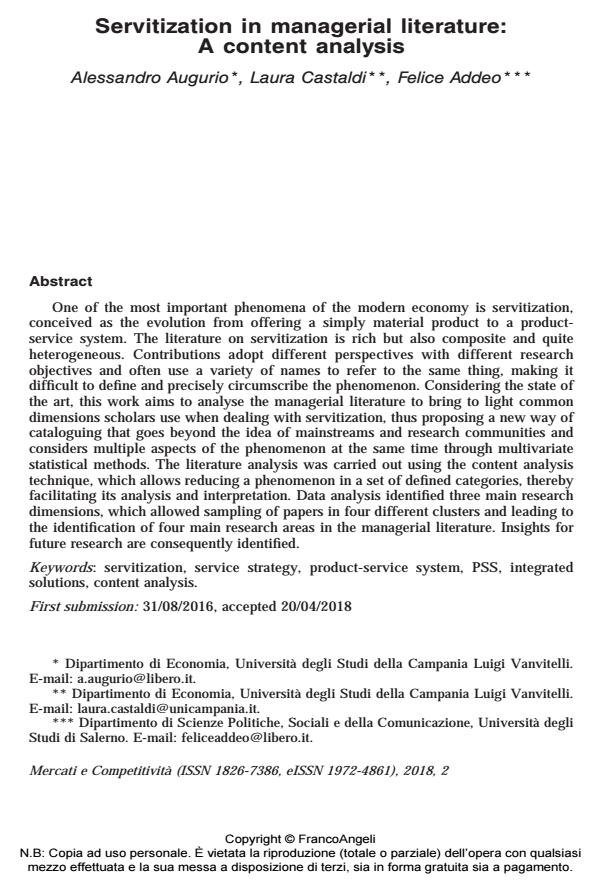Servitization in managerial literature: A content analysis
Titolo Rivista MERCATI & COMPETITIVITÀ
Autori/Curatori Alessandro Augurio, Laura Castaldi, Felice Addeo
Anno di pubblicazione 2018 Fascicolo 2018/2
Lingua Inglese Numero pagine 30 P. 131-160 Dimensione file 510 KB
DOI 10.3280/MC2018-002007
Il DOI è il codice a barre della proprietà intellettuale: per saperne di più
clicca qui
Qui sotto puoi vedere in anteprima la prima pagina di questo articolo.
Se questo articolo ti interessa, lo puoi acquistare (e scaricare in formato pdf) seguendo le facili indicazioni per acquistare il download credit. Acquista Download Credits per scaricare questo Articolo in formato PDF

FrancoAngeli è membro della Publishers International Linking Association, Inc (PILA)associazione indipendente e non profit per facilitare (attraverso i servizi tecnologici implementati da CrossRef.org) l’accesso degli studiosi ai contenuti digitali nelle pubblicazioni professionali e scientifiche
One of the most important phenomena of the modern economy is servitization, conceived as the evolution from offering a simply material product to a productservice system. The literature on servitization is rich but also composite and quite heterogeneous. Contributions adopt different perspectives with different research objectives and often use a variety of names to refer to the same thing, making it difficult to define and precisely circumscribe the phenomenon. Considering the state of the art, this work aims to analyse the managerial literature to bring to light common dimensions scholars use when dealing with servitization, thus proposing a new way of cataloguing that goes beyond the idea of mainstreams and research communities and considers multiple aspects of the phenomenon at the same time through multivariate statistical methods. The literature analysis was carried out using the content analysis technique, which allows reducing a phenomenon in a set of defined categories, thereby facilitating its analysis and interpretation. Data analysis identified three main research dimensions, which allowed sampling of papers in four different clusters and leading to the identification of four main research areas in the managerial literature. Insights for future research are consequently identified.
Parole chiave:Servitization, service strategy, product-service system, PSS, integrated solutions, content analysis.
Alessandro Augurio, Laura Castaldi, Felice Addeo, Servitization in managerial literature: A content analysis in "MERCATI & COMPETITIVITÀ" 2/2018, pp 131-160, DOI: 10.3280/MC2018-002007